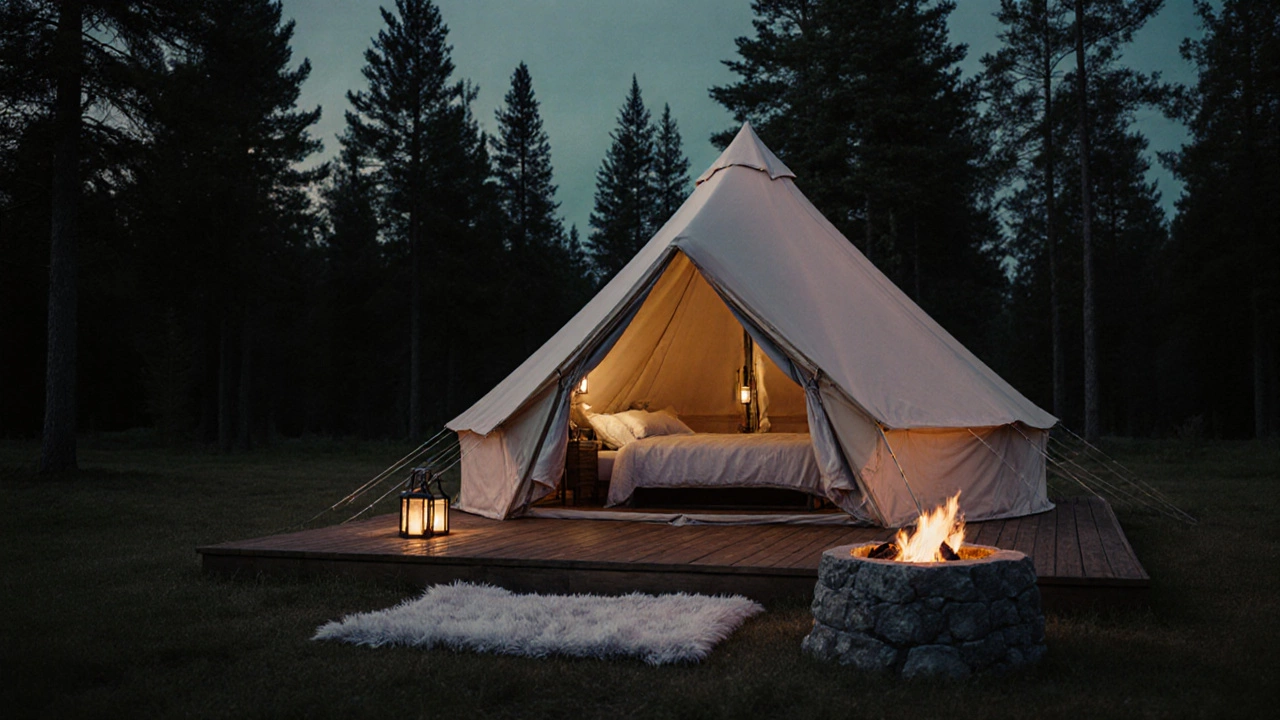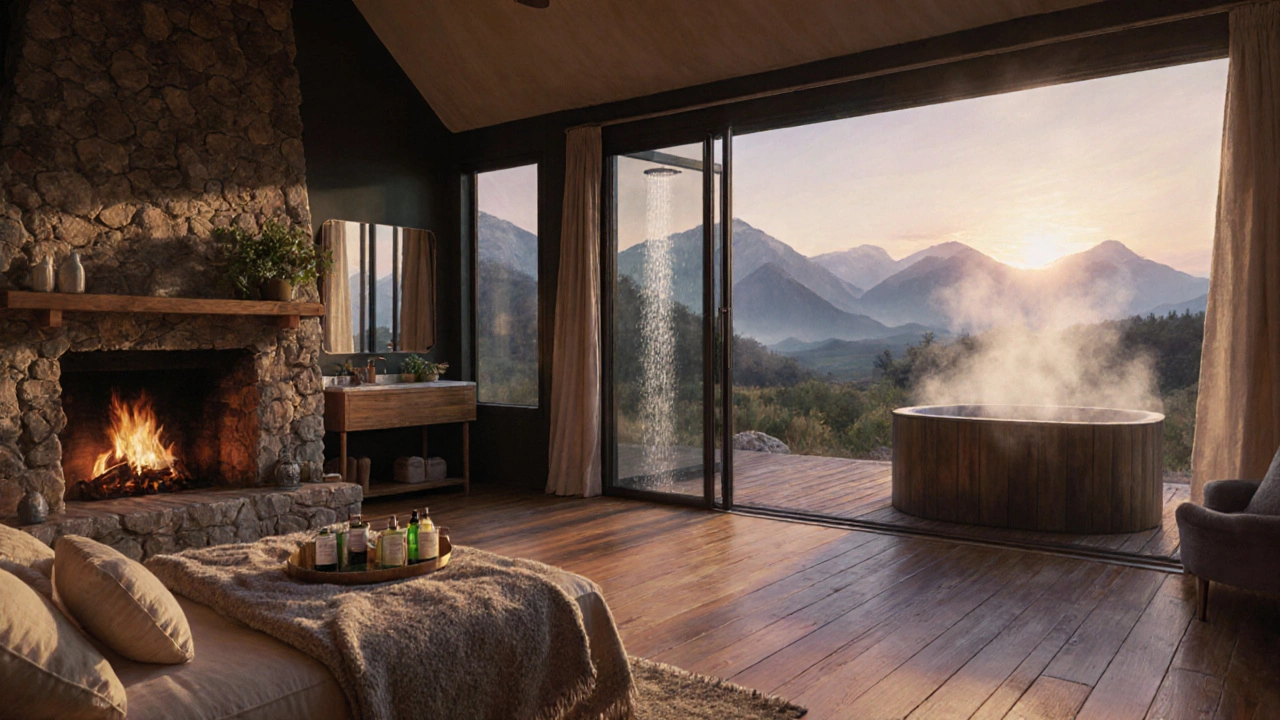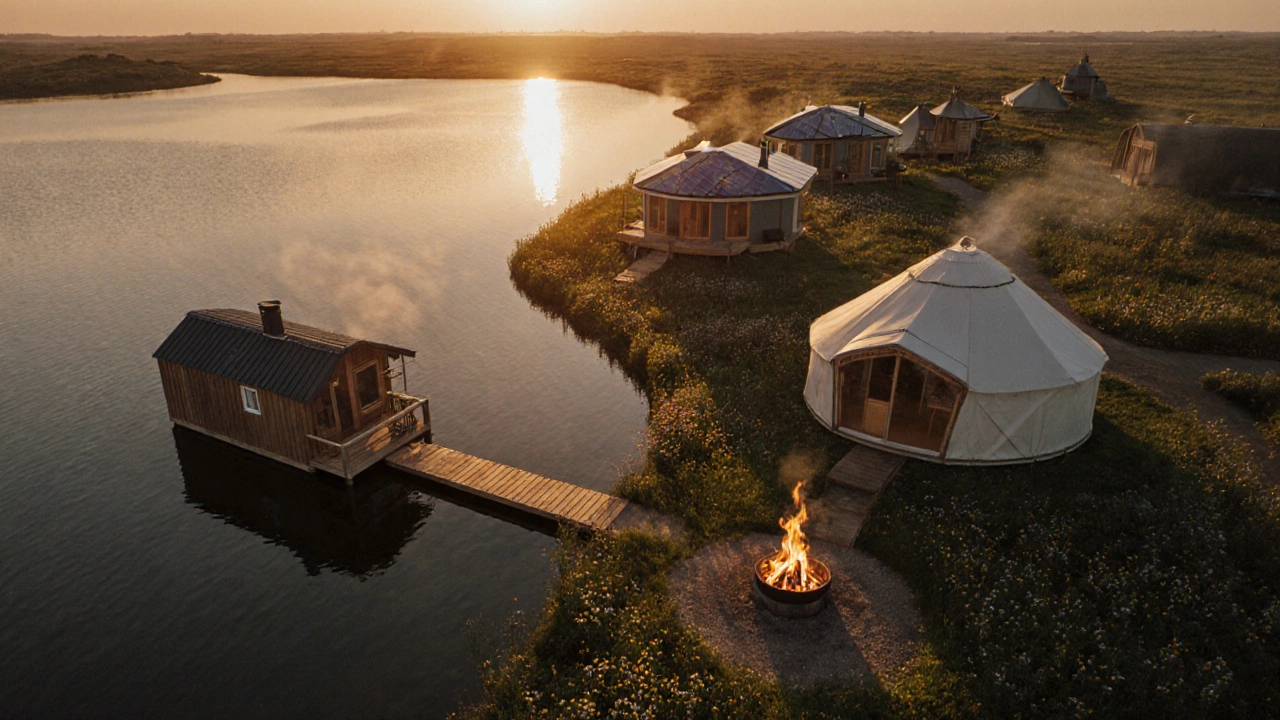What Is the Point of Glamping? Exploring the Appeal of Luxury Camping

Glamping Type Selector
Find Your Perfect Glamping Experience
Answer a few questions to get personalized recommendations for your next adventure.
Your Perfect Glamping Experience
When you hear the word glamping is a blend of “glamorous” and “camping” that offers upscale accommodations in natural settings, you might picture a fancy tent draped over a forest clearing or a cabin perched on a mountain ridge. In reality, glamping covers a whole spectrum of experiences that let you enjoy the outdoors without giving up comfort. Below we break down why travelers are swapping sleeping bags for plush beds, how glamping fits into sustainable tourism, and what you should know before booking your first stay.
Defining Glamping
Glamping, short for glamorous camping, rose to prominence in the early 2000s as boutique campsites began offering hotel‑level amenities in wild locations. Today, the term encompasses everything from yurts - circular, canvas‑covered dwellings with wood stoves - to safari tents stocked with linen, private bathrooms, and even hot tubs.
Why People Choose Glamping Over Traditional Camping
Traditional camping appeals to the rugged side of travelers, but it also demands a lot of gear, planning, and willingness to rough it. Glamping eliminates many pain points:
- Comfort on demand: Forget digging a fire pit or shivering in a cold bag - most sites provide real beds, electricity, and climate control.
- Time efficiency: You arrive, unpack, and start exploring. No need to spend hours setting up tents.
- Safety: Secure structures and on‑site staff reduce worries about wildlife or weather.
In short, glamping lets you experience nature without sacrificing the small luxuries that make a vacation enjoyable.
Key Benefits of Glamping
Beyond comfort, glamping offers several tangible advantages that resonate with modern travelers.
- Eco‑friendly travel - Many sites use solar panels, composting toilets, and locally sourced materials, reducing the carbon footprint compared to conventional hotels.
- Sustainable tourism - By staying on designated properties, guests help preserve fragile ecosystems and support community‑based economies.
- Unique experiences - Sleep under the stars in a tiny house or wake up to a sunrise over a lake from a floating cabin.
- Photography gold - The combination of natural backdrops and stylish interiors makes for Instagram‑ready shots without heavy editing.

Popular Glamping Formats
Not all glamping looks the same. Below is a quick comparison of the most common formats, highlighting what makes each special.
| Type | Typical Size | Key Amenities | Best For |
|---|---|---|---|
| Yurt | 150‑250 sq ft | Wood‑burning stove, queen‑size bed, private bathroom | Winter‑friendly stays, scenic valleys |
| Safari Tent | d>200‑300 sq ftClothing‑line shower, king‑size bed, outdoor deck | Safari‑style wildlife reserves, hot‑dry climates | |
| Glamping Cottage | 300‑500 sq ft | Full kitchen, fireplace, hot tub | Couples seeking romance, families wanting space |
| Treehouse | 120‑250 sq ft | Elevated deck, rope ladder, basic bathroom | Adventure‑seeking kids, nature immersion |
| Tiny House | 100‑200 sq ft | Compact kitchen, loft bedroom, solar power | Minimalist travelers, road‑trip enthusiasts |
Glamping Cottages: A Deeper Look
Glamping cottages blend the charm of a countryside retreat with the polish of a boutique hotel. Common features include:
- Hardwood floors and decorative lighting that create a warm, inviting atmosphere.
- En‑suite bathrooms equipped with rainfall showers and plant‑based toiletries.
- Outdoor fire pits or hot tubs that let you unwind after a day of hiking.
Locations range from the misty forests of British Columbia’s coastal mountains to the sun‑drenched valleys of the Napa Valley. Because cottages are often built with local timber and stone, they blend seamlessly into the landscape, reinforcing the sustainable ethos of glamping.
Eco‑Friendly Aspects of Glamping
Travelers increasingly ask, “Is glamping really green?” The answer depends on the site, but many operators adopt eco‑friendly practices:
- Renewable energy: Solar panels and wind turbines power lights and heating.
- Water stewardship: Rainwater harvesting and low‑flow fixtures reduce consumption.
- Waste reduction: Composting toilets and recycling stations keep waste out of the landfill.
- Local sourcing: Food is often farm‑to‑table, supporting nearby growers and minimizing transport emissions.
When you book a site that highlights these measures, your stay contributes to sustainable tourism rather than simply adding another carbon‑intensive hotel night.

Planning Your First Glamping Trip
Ready to try it out? Follow these steps to ensure a smooth experience.
- Decide on the vibe you want - rustic yurt, luxe cottage, or boho treehouse. Use the comparison table above as a guide.
- Check the season. Some tents need heating in winter, while others are best in warm weather.
- Pack smart. Bring comfy clothes, a reusable water bottle, and a flashlight. Most sites provide bedding and towels.
- Book early. Popular spots near national parks fill up months in advance.
- Research eco‑certifications. Look for “LEED‑registered” or “Green Globe” badges to confirm sustainable practices.
Most importantly, leave a little extra space for spontaneity - a sunrise hike, a night of stargazing, or a spontaneous campfire song.
Common Misconceptions Debunked
There are a few myths that keep people from trying glamping. Let’s set the record straight.
- Myth: It’s just a fancy tent. - While tents are common, glamping also includes fully built cottages, cabins, and even tiny houses with all the comforts of home.
- Myth: It’s overpriced. - Costs vary widely. A night in a yurt can be comparable to a mid‑range hotel, but you get the added value of nature immersion.
- Myth: It’s not truly “green”. - As noted earlier, many operators adopt renewable energy, water conservation, and waste‑reduction strategies.
Understanding these facts helps you decide whether glamping aligns with your travel goals.
Next Steps and Resources
If you’re still on the fence, try reading reviews on platforms like TripAdvisor or checking out Instagram hashtags such as #glampingcottage. Booking sites often filter results by eco‑friendly amenities, making it easier to find a spot that matches your values.
Remember, the point of glamping isn’t just to avoid sleeping on the ground; it’s to blend comfort, adventure, and responsibility into one unforgettable stay.
What is the difference between glamping and regular camping?
Glamping provides hotel‑level amenities-real beds, electricity, private bathrooms-inside structures like yurts, cabins, or luxury tents. Regular camping typically requires you to bring your own gear, set up a tent, and use communal facilities.
Are glamping sites environmentally friendly?
Many operators prioritize renewable energy, water conservation, and local sourcing, making glamping a more sustainable option than traditional hotels. Look for green certifications to be sure.
What should I pack for a glamping trip?
Pack comfortable clothing, toiletries, a reusable water bottle, and a flashlight. Most sites provide bedding, towels, and kitchen basics, so you can travel light.
Can I find glamping cottages near the Canadian Rockies?
Yes - the Rockies host a variety of glamping cottages, many built from local timber with spectacular mountain views. Booking a few months ahead is recommended.
Is glamping suitable for families?
Absolutely. Larger cottages and cabins often have multiple bedrooms, child‑friendly amenities, and safe outdoor spaces for kids to explore.